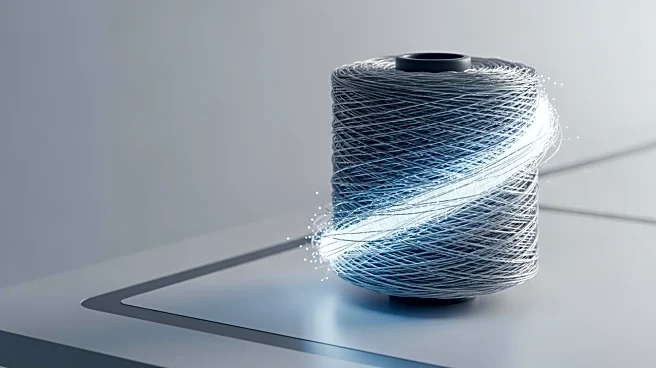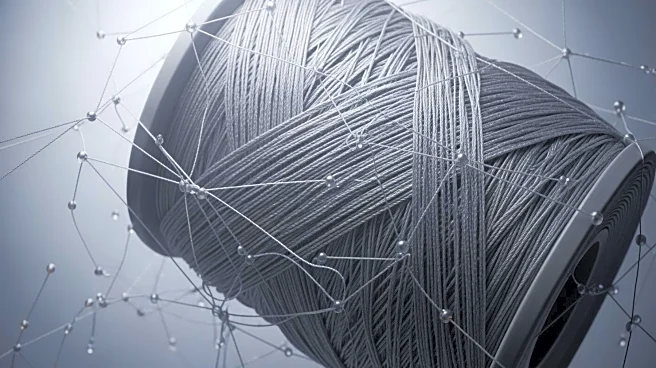What's Happening?
A recent study published in Nature introduces a scalable method for creating magnetorheological fibers and fabrics that actively change shape, stiffness, and motion in response to magnetic fields. This
development is significant for advancements in soft robotics, wearables, and human-machine interfaces. The research integrates soft magnetics with textile mechanics to achieve complex and programmable actuation in fabric structures. Unlike previous systems that used rigid materials, this approach embeds soft magnetic particles within a flexible polymer matrix, enabling dynamic and reversible responses. The study demonstrated how these fabrics can be integrated into functional soft devices, paving the way for intelligent garments and surfaces that interact with users and respond to environments.
Why It's Important?
The introduction of magnetorheological fibers represents a significant leap in the field of smart textiles, offering potential applications in various industries such as healthcare, fashion, and robotics. These fabrics can enhance user interaction and environmental responsiveness, supporting next-generation soft robotic systems and human-machine interfaces. The ability to create textiles that can change properties in real-time could lead to innovations in wearable technology, providing new functionalities and improving user experience. This advancement also highlights the growing importance of integrating technology into everyday materials, potentially transforming industries reliant on traditional textile manufacturing.
What's Next?
The development of these smart textiles could lead to increased collaboration between textile manufacturers and technology companies, aiming to commercialize these innovations. As the technology matures, it may attract interest from sectors looking to enhance product functionality and user interaction. Future research may focus on optimizing the scalability and cost-effectiveness of these materials, making them accessible for broader applications. Additionally, regulatory bodies might consider establishing standards for smart textiles to ensure safety and performance consistency.
Beyond the Headlines
The ethical implications of smart textiles include considerations around privacy and data security, as these fabrics could potentially collect user data. There may also be environmental concerns regarding the production and disposal of these technologically enhanced materials. Long-term, the integration of smart textiles into everyday life could shift cultural perceptions of clothing and personal devices, blurring the lines between fashion and technology.











